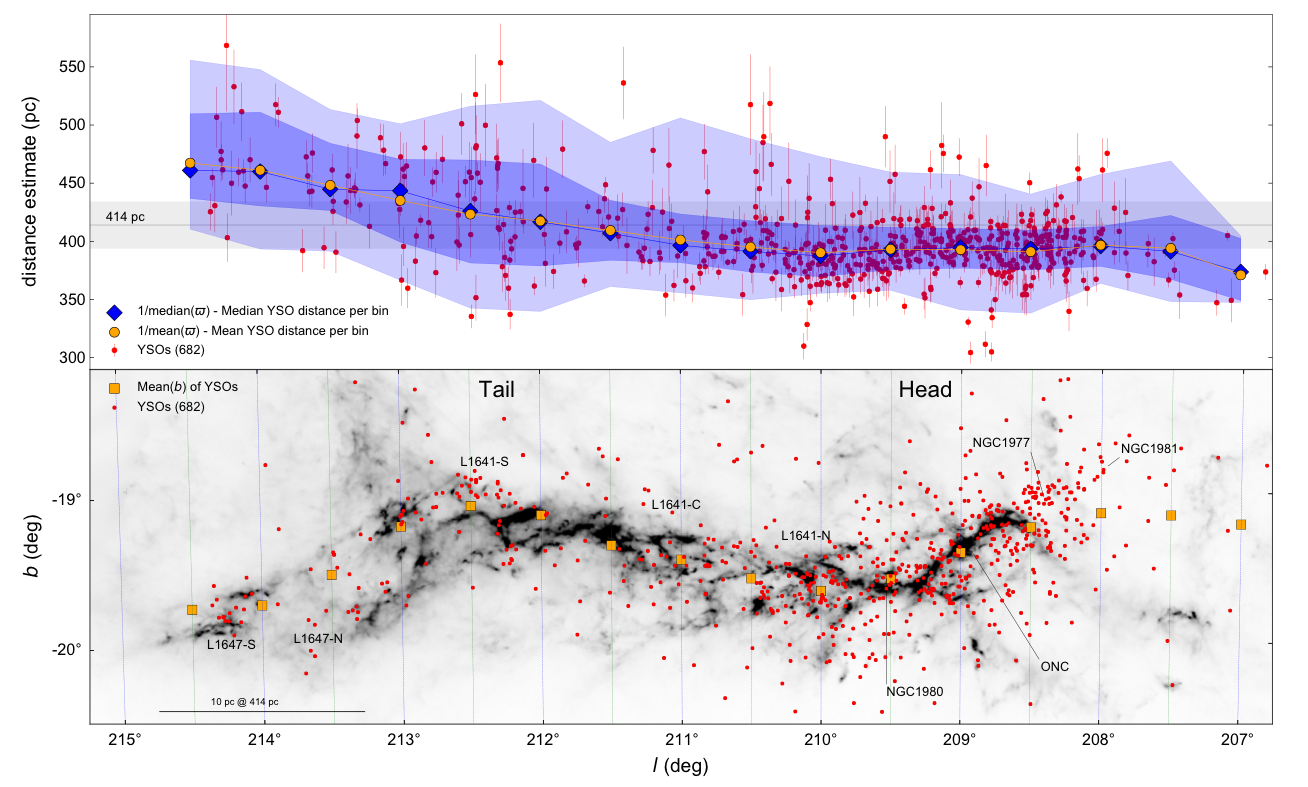We use the $\mathit{Gaia}$ DR2 distances of about 700 mid-infrared selected young stellar objects in the benchmark giant molecular cloud Orion A to infer its 3D shape and orientation. We find that Orion A is not the fairly straight filamentary cloud that we see in (2D) projection, but instead a cometary-like cloud oriented toward the Galactic plane, with two distinct components: a denser and enhanced star-forming (bent) Head, and a lower density and star-formation quieter $\sim$75 pc long Tail. The true extent of Orion A is not the projected $\sim$40 pc but $\sim$90 pc, making it by far the largest molecular cloud in the local neighborhood. Its aspect ratio ($\sim$30:1) and high column-density fraction ($\sim45\%$) make it similar to large-scale Milky Way filaments (“bones”), despite its distance to the galactic mid-plane being an order of magnitude larger than typically found for these structures.
Grossschedl, Josefa E.; Alves, Joao; Meingast, Stefan; Ackerl, Christine; Ascenso, Joana; Bouy, Herve; Burkert, Andreas; Forbrich, Jan; Fuernkranz, Verena; Goodman, Alyssa; Hacar, Alvaro; Herbst-Kiss, Gabor; Lada, Charles J.; Larreina, Irati; Leschinski, Kieran; Lombardi, Marco; Moitinho, Andre; Mortimer, Daniel; Zari, Eleonora
2018, ArXiv e-prints, 1808, arXiv:1808.05952
http://adsabs.harvard.edu/abs/2018arXiv180805952G
